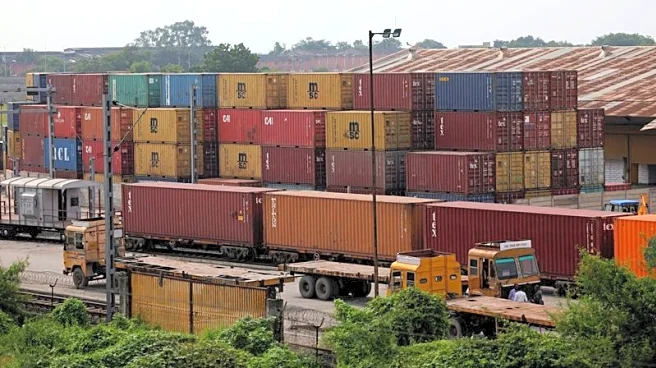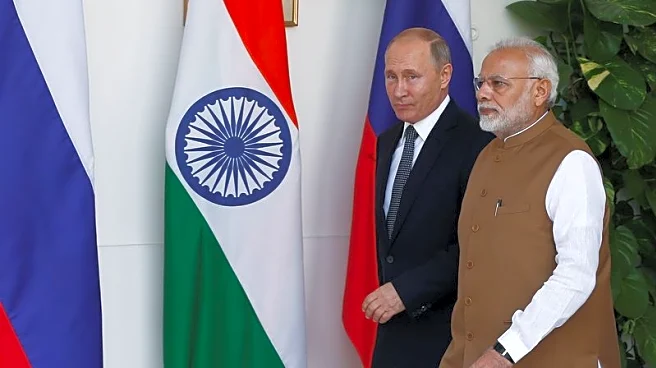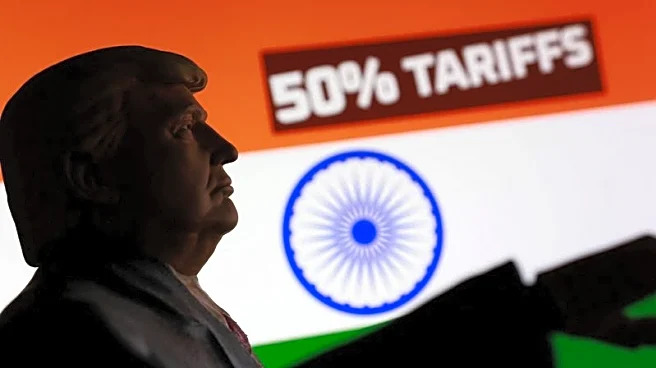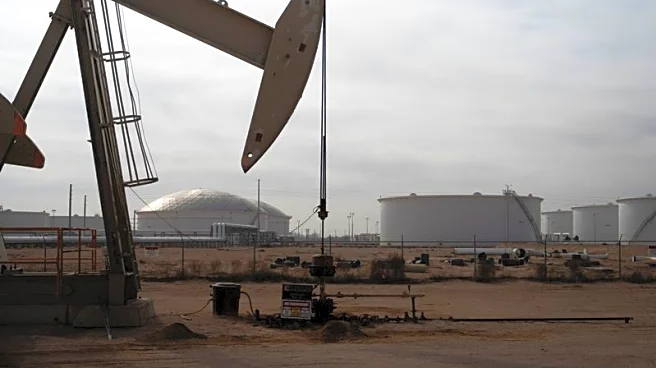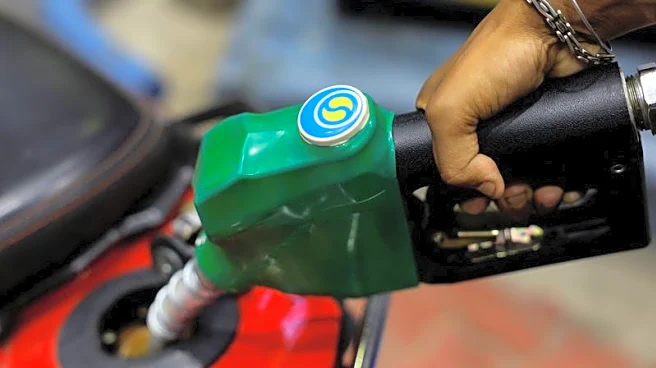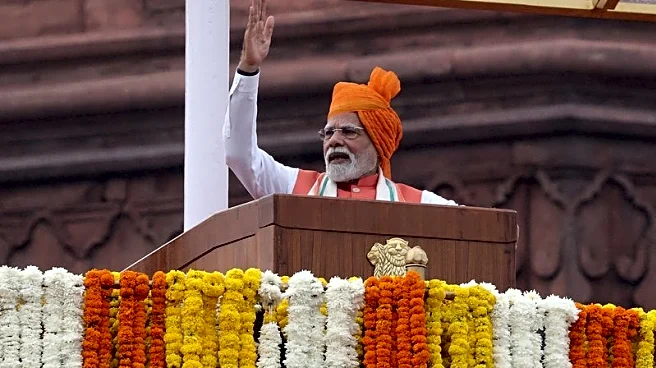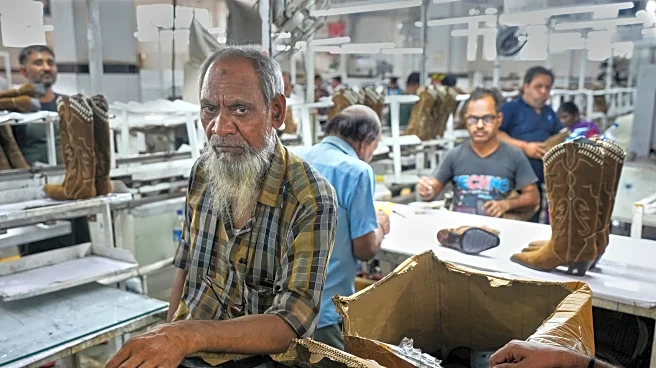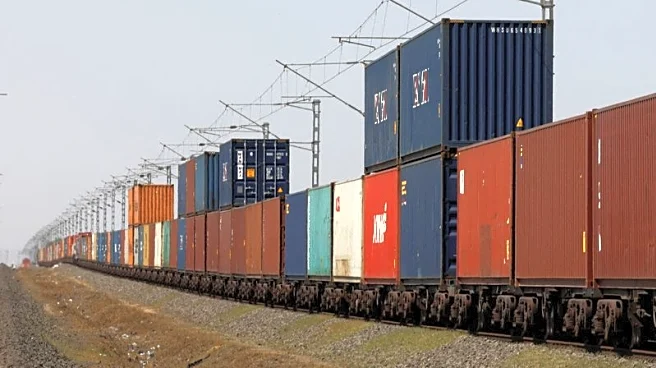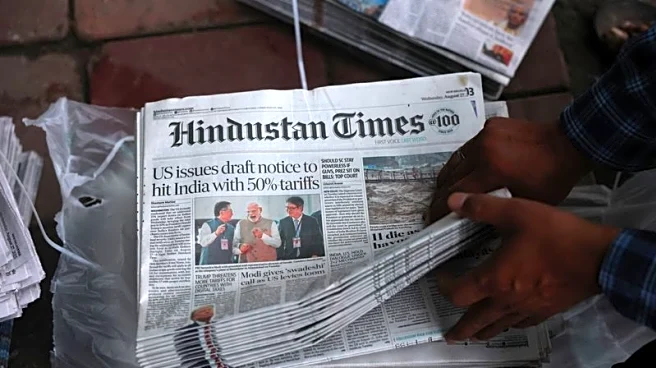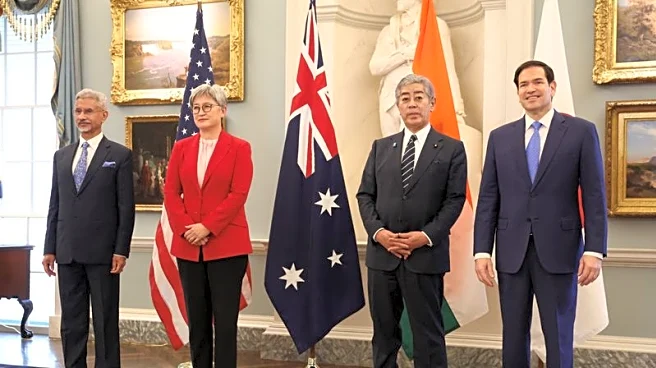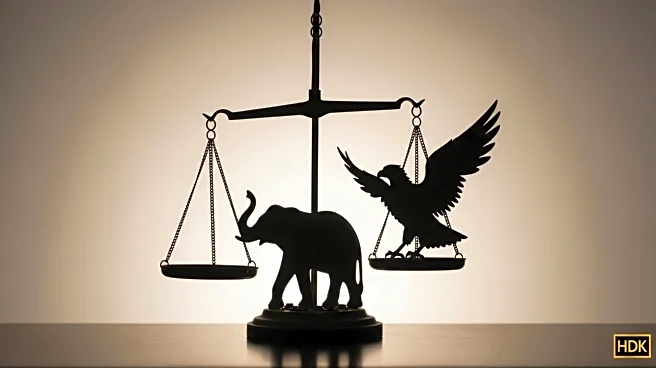By Manoj Kumar
NEW DELHI (Reuters) -India’s economy likely slowed in the April-June quarter as weak urban demand and slow private investment weighed on growth, with U.S. tariff hikes expected to hurt key exports including textiles, footwear, chemicals and food items in the quarters ahead.
The United States on Wednesday doubled its tariffs on Indian goods to as high as 50%, citing New Delhi’s buying of Russian oil - the most punishing rate among U.S. trading partners on a par with Brazil, in a move
economists say could hurt growth and jobs.
Gross domestic product is expected to have grown 6.7% year-on-year in April-June, down from 7.4% in the previous three months, according to a Reuters poll of economists.
Even at this pace, India remains one of the fastest-growing major economies. The central bank expects full-year growth to remain close to 6.5% and sees "minimal impact" from higher tariffs, its governor Sanjay Malhotra has said.
The Ministry of Statistics will release GDP data for April-June, the first quarter of fiscal 2025/26, on Friday at 1030 GMT.
Economists say a good monsoon, strong government spending, easing food inflation and front-loaded U.S. shipments likely supported growth in the quarter despite weak urban demand and slow private investment.
Even as real GDP growth holds up, nominal GDP growth, which includes the impact of inflation, is expected to have softened to 8% after averaging almost 11% over the previous eight quarters, according to JPMorgan.
Retail inflation eased to 1.55% in July, an eight-year low.
Lower nominal growth, driven by multi-year low inflation, is likely to have weighed on government tax revenues and corporate profits.
Annual sales growth of 1,736 listed private manufacturing firms eased to 5.3% in the June quarter, from 6.6% in the previous quarter, a report from the Reserve Bank of India, the central bank, showed earlier this week.
Some economists fear prolonged higher U.S. tariffs could dent India's growth further in the coming quarters as exports slow and limit the country's appeal as an alternative manufacturing hub to China.
"If it sticks for a year, GDP growth can slide by 0.7 percentage point, with much of the burden falling on labour-intensive sectors such as jewellery, textiles, and food items," Pranjul Bhandari, chief economist at HSBC, said in a note on Thursday.
The government has pledged support for sectors hit by Washington's tariffs and planned tax cuts to boost domestic consumption.
In its monthly economic report on Wednesday, the finance ministry said planned goods and services tax cuts on essentials would ease household costs and lift demand, while S&P Global's recent ratings upgrade could lower borrowing costs, attract foreign capital and support growth.
(Additional reporting by Nikunj Ohri; Editing by Hugh Lawson)
